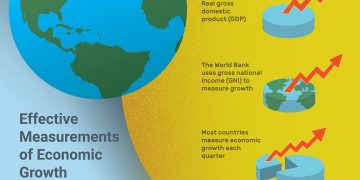In early 2025, the Reddit WallStreetBets (WSB) community ignited a frenzy around midcap stocks like Plug Power and Upstart, with keyword mentions soaring by 280% in January alone. This unprecedented surge in retail investor interest in midcap names contrasts sharply with the macroeconomic backdrop where the US Treasury yield curve inverted significantly, with the 2-year minus 10-year spread plunging to -0.85%, signaling growing recession fears. Why does this retail-driven excitement in midcaps coexist uneasily with bond market warnings of economic slowdown? The tension between a retail-fueled equity rally and a bond market signaling tightening financial conditions and recession risk encapsulates a fundamental clash in market expectations for 2025. This article unpacks the core data driving these divergent signals, explores their cross-market impacts, reviews contrasting expert views, and considers strategic outlooks for investors navigating this complex landscape.
Key Data and Background
The core data shaping this dynamic begins with the social media analytics showing a dramatic rise in retail interest in midcap stocks on Reddit’s WSB forum. In January 2025, mentions of midcap companies like Plug Power, a leader in hydrogen fuel cell technology, and Upstart, an AI-powered lending platform, increased by approximately 280% compared to the previous month, according to analytics from social listening tools. This spike parallels a broader retail trading resurgence following pandemic-era liquidity and ongoing low interest rates, which have pushed individual investors to seek higher returns outside traditional blue-chip stocks. Meanwhile, the US Treasury market tells a different story: the 2-year and 10-year Treasury yields have inverted sharply, with the spread reaching -0.85%. This inversion is widely viewed by market professionals as a reliable recession predictor, reflecting expectations that the Federal Reserve’s monetary tightening and economic headwinds will dampen growth prospects over the medium term. The Federal Reserve’s balance sheet contraction and quantitative tightening in late 2024 further tightened liquidity conditions, reinforcing this bond market signal. (See Figure 1: 2024-2025 US Treasury Yield Curve Changes) This divergence sets up a paradox where retail enthusiasm pushes midcap equity prices upward while fixed income markets brace for economic deceleration.

Cross-Market Impacts
The retail surge in midcaps exerts upward pressure on equity valuations and, critically, increases corporate financing costs for these smaller companies. Unlike mega-cap blue chips, midcaps often rely more heavily on debt markets for growth capital. Elevated equity prices driven by retail momentum reduce the attractiveness of equity issuance for these firms but may simultaneously raise borrowing costs as investors demand higher yields to offset risk. The result is a nuanced interplay where retail investor demand pushes equity prices up, but tighter credit spreads and bond market caution make debt more expensive. This dynamic contrasts with previous episodes such as the 2013 taper tantrum, where bond market tightening swiftly deflated equity exuberance. However, unlike 2013, the current environment features a strong retail cohort coordinated via social media, sustaining buying pressure even amid rising yields. Furthermore, the strengthening US Treasury prices reflect investor flight to safety, causing banks to tighten lending standards amid concerns about future defaults and economic softness. This hesitancy to lend further constrains credit availability for midcap firms, potentially undermining their growth despite elevated stock prices. These cross-market tensions echo historical patterns but are complicated by the unique retail-investor-driven demand that defies traditional institutional logic.
Expert Opinions and Diverging Views
Morgan Stanley and other major financial institutions interpret the yield curve inversion as a clear sign of impending economic slowdown or recession, urging caution for investors chasing elevated midcap valuations. Their research reports highlight that inverted yield curves precede the last seven recessions with high accuracy, and warn that retail-driven rallies may falter as liquidity tightens and earnings forecasts adjust downward. Morgan Stanley’s strategists emphasize that while retail enthusiasm is powerful, it often peaks before fundamental deterioration becomes apparent, suggesting a potential midcap correction ahead. Conversely, FinBuzz, a retail investor research organization, offers a contrarian perspective. They argue that the midcap meme-stock phenomenon represents a structural shift in generational investment behavior, fueled by greater digital access and changing risk appetites among younger investors. According to FinBuzz, this cohort prioritizes technology-driven growth stories and is willing to tolerate volatility and fundamental risk longer than traditional investors. They claim this creates a new “investment regime” where classic recession signals from bond markets may have reduced predictive power. Supporting this view, they cite persistent retail inflows into midcap ETFs and sustained high volumes on social trading platforms. Academic research has begun to examine whether this retail momentum can create self-reinforcing price dynamics that decouple short-term equity performance from macroeconomic fundamentals.
Future Outlook and Strategies
Looking ahead to the rest of 2025, three plausible scenarios emerge. In an optimistic case, continued retail enthusiasm and strong corporate earnings in selected midcap sectors—especially green energy and fintech—could sustain the rally despite macro headwinds. This would require Federal Reserve policy to moderate, avoiding a deeper recession, and for midcaps to prove resilient in cash flow generation. Alternatively, a pessimistic scenario sees the yield curve inversion materialize into a recession that disproportionately hits midcap firms with weaker balance sheets, triggering a sharp correction in retail favorite stocks and a broader market pullback. A moderate base case envisions volatility, with episodic selloffs punctuated by retail-led rebounds, reflecting ongoing tension between bond market caution and social media-driven equity speculation. Investors should monitor several key indicators: changes in the 2s-10s yield spread as a recession gauge, corporate credit spreads reflecting midcap borrowing costs, and retail trading volumes on platforms like Reddit and Robinhood. Diversification across market caps and sectors, coupled with cautious position sizing in midcaps, can mitigate risk. Additionally, monitoring Federal Reserve communications for signals of policy shifts remains critical.
Conclusion
The 2025 surge in Reddit WSB buzz around midcap stocks like Plug Power and Upstart clashes sharply with ominous signals from the inverted US Treasury yield curve. This divergence highlights a fundamental market tension between retail-driven optimism and institutional caution informed by macroeconomic fundamentals. Whether retail enthusiasm can withstand bond market warnings remains an open question, underscoring the complexity of investing in today’s digitally interconnected financial ecosystem. Will the meme-stock phenomenon redefine traditional recession signals, or will economic realities reassert control? Investors and analysts alike must watch closely.



































